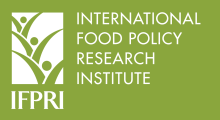Resource information
Utilizing a spatial multi-market model for rice in Nigeria that explicitly takes into account the potential for smuggling, in this paper we analyze the welfare implications of alternative rice tariff rates given the government’s goals of spurring domestic production and reducing imports. Because smuggling occurs through the diversion of imports from Lagos, the official port of entry in the south, to the north, our modeling framework also captures the spatial effects of higher tariffs on changes in rural and urban prices, production and consumption, the flow of trade in rice, and welfare across different parts of the country. Results show that tariff rates that exceed about 40 percent introduce some smuggling of rice through the north when smuggling becomes more profitable than importing through official channels in the south. It is also at this tipping point that government tariff revenues are maximized. At higher tariff rates with smuggling, the south experiences greater welfare losses, especially in urban areas.


